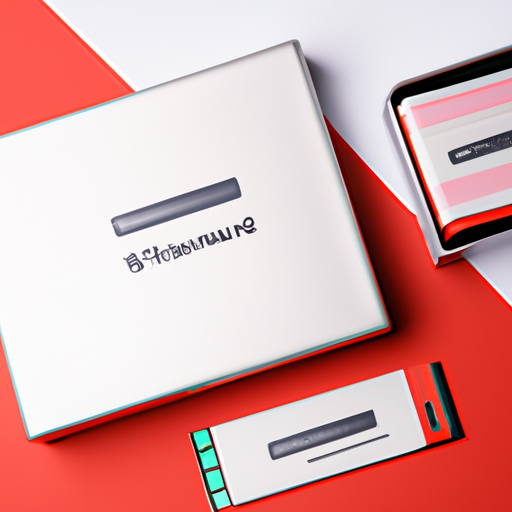

Title: The Mainstream Storage Card Production Process: A Comprehensive Overview

1. Design and Planning: The production process of storage cards begins with meticulous design and planning. Manufacturers analyze market demands, technological advancements, and consumer preferences to determine the specifications and features of the storage cards. This stage involves extensive research and development to ensure the final product meets the desired performance standards.
2. Semiconductor Wafer Fabrication: The next step in the production process is the fabrication of semiconductor wafers. These wafers serve as the foundation for the storage card's memory chips. The fabrication process involves several intricate steps, including cleaning, deposition, lithography, etching, and polishing. These processes are performed in a cleanroom environment to prevent any contamination that could affect the quality of the memory chips.
3. Memory Chip Production: Once the semiconductor wafers are fabricated, they undergo a series of processes to transform them into memory chips. This involves dicing the wafers into individual chips, followed by the application of various layers, such as conductive and insulating layers, to create the necessary circuitry. The chips are then tested for functionality and quality assurance.
4. Packaging and Assembly: After the memory chips are produced, they are packaged and assembled into the final storage card form. This involves encapsulating the chips in a protective casing, typically made of plastic or metal, to shield them from physical damage and environmental factors. The packaging process also includes adding contact pads, which allow the storage card to be inserted into electronic devices.
5. Testing and Quality Control: Once the storage cards are assembled, they undergo rigorous testing and quality control procedures. These tests ensure that the cards meet the required performance standards, including read and write speeds, data integrity, and compatibility with various devices. Any defective cards are identified and discarded during this stage to maintain the highest level of quality.
6. Formatting and Data Loading: After passing the testing phase, the storage cards are formatted and prepared for data loading. This involves configuring the file system and partitioning the storage space to optimize performance and compatibility. Additionally, some storage cards may undergo data loading, where pre-installed content, such as software or media files, is added to enhance user experience.
7. Packaging and Distribution: The final step in the production process is packaging and distribution. The storage cards are packaged in retail-ready packaging, including blister packs, plastic cases, or cardboard boxes, along with user manuals and warranty information. The packaged cards are then distributed to retailers, wholesalers, or directly to consumers through online platforms.
Conclusion: The mainstream storage card production process involves a series of intricate steps, from design and planning to packaging and distribution. Manufacturers employ advanced technologies and adhere to strict quality control measures to ensure the production of high-performance and reliable storage cards. Understanding the production process provides valuable insights into the complexity and precision required to manufacture these essential components of our digital lives.
Title: The Mainstream Storage Card Production Process: A Comprehensive Overview

1. Design and Planning: The production process of storage cards begins with meticulous design and planning. Manufacturers analyze market demands, technological advancements, and consumer preferences to determine the specifications and features of the storage cards. This stage involves extensive research and development to ensure the final product meets the desired performance standards.
2. Semiconductor Wafer Fabrication: The next step in the production process is the fabrication of semiconductor wafers. These wafers serve as the foundation for the storage card's memory chips. The fabrication process involves several intricate steps, including cleaning, deposition, lithography, etching, and polishing. These processes are performed in a cleanroom environment to prevent any contamination that could affect the quality of the memory chips.
3. Memory Chip Production: Once the semiconductor wafers are fabricated, they undergo a series of processes to transform them into memory chips. This involves dicing the wafers into individual chips, followed by the application of various layers, such as conductive and insulating layers, to create the necessary circuitry. The chips are then tested for functionality and quality assurance.
4. Packaging and Assembly: After the memory chips are produced, they are packaged and assembled into the final storage card form. This involves encapsulating the chips in a protective casing, typically made of plastic or metal, to shield them from physical damage and environmental factors. The packaging process also includes adding contact pads, which allow the storage card to be inserted into electronic devices.
5. Testing and Quality Control: Once the storage cards are assembled, they undergo rigorous testing and quality control procedures. These tests ensure that the cards meet the required performance standards, including read and write speeds, data integrity, and compatibility with various devices. Any defective cards are identified and discarded during this stage to maintain the highest level of quality.
6. Formatting and Data Loading: After passing the testing phase, the storage cards are formatted and prepared for data loading. This involves configuring the file system and partitioning the storage space to optimize performance and compatibility. Additionally, some storage cards may undergo data loading, where pre-installed content, such as software or media files, is added to enhance user experience.
7. Packaging and Distribution: The final step in the production process is packaging and distribution. The storage cards are packaged in retail-ready packaging, including blister packs, plastic cases, or cardboard boxes, along with user manuals and warranty information. The packaged cards are then distributed to retailers, wholesalers, or directly to consumers through online platforms.
Conclusion: The mainstream storage card production process involves a series of intricate steps, from design and planning to packaging and distribution. Manufacturers employ advanced technologies and adhere to strict quality control measures to ensure the production of high-performance and reliable storage cards. Understanding the production process provides valuable insights into the complexity and precision required to manufacture these essential components of our digital lives.